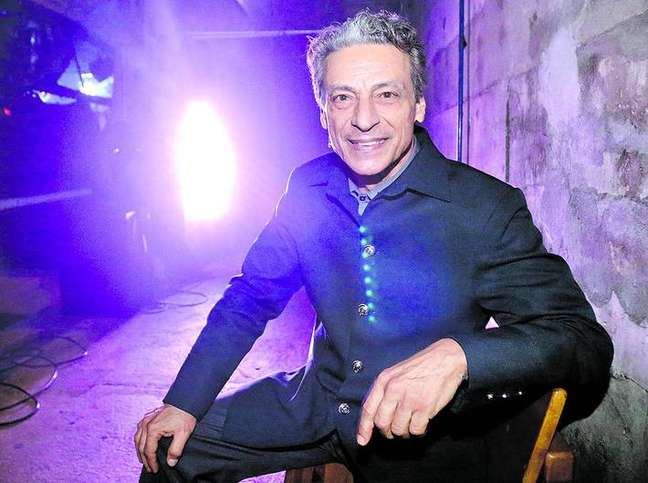The Municipal Theater of Sao Paulo stages a new production of Prokofiev’s opera, directed by Luiz Carlos Vasconcelos
SPECIAL FOR THE STATE – Prime Minister Leandro and Princess Clarisse, granddaughter of the king, plot on the scene: it is necessary to prevent the prince from ascending the throne. Yes, he is a hypochondriac, afflicted with excruciating sadness. But what if you survive the king? Leandro decides to poison him. And what poison to use? A little bit of tragic prose. Or, perhaps, a bunch of verses – not just any verse, but the so-called “hammer”, consisting of ten syllables. Just pass them on the bread; or chop them into your soup.
It is with this tone of satire, often associated with absurdity, that The love of the three oranges is staged at the Municipal Theater of San Paolo. Created by Sergei Prokofiev in 1919 the opera will be directed by the actor Luiz Carlos Vasconceloscreator of the Circo Piolin, and by the maestro Roberto Minczukin front of the Municipal Symphony Orchestra and the Lyric Choir.
“I was completely blown away by Prokofiev’s genius,” says Vasconcelos. “In the first meeting with the whole team, I said: Prokofiev expects something from us. And we always work in dialogue with this goal,” he says.
It’s a dialogue with many characters. the origin of The love of the three oranges it dates back to the 17th century, when Giambattista Basile collected from Neapolitan folklore the fable of a king who hires artists to cure his son’s pain – while the court plots to prevent his rise to power. A century later, Carlo Gozzi reinvented history, giving it the character of satire on the tragic theatrical conventions of his time. At the beginning of the twentieth century, the playwright Vsevolod Meyerhold he translated the play into Russian and handed it over to Prokofiev. The composer then added more irony and sarcasm to the mix and translated it into French, aided by a close friend, the Brazilian soprano. Vera Janacopulos.
“My creative process goes mainly through Meyerhold, which is very tied to Russian popular culture,” recalls Vasconcelos. “That’s why this irony about theater and opera is connected with my world, what determines my appearance as an individual and artist, which is my relationship with the popular culture of the Northeast. The plot of the opera is a popular story, that I get closer to my stage truths, passing through Meyerhold and the way in which Prokofiev puts even more irony in the text “.
sung word
This is not the director’s first job with the opera. In 2003 he is in front of Portinari, presented at the Sesc Ipiranga. And in 2009 he directed the world premiere of Dulcinea and Trancosoby Eli-Eri Moura, on a booklet by WS Solha inspired by Ariano Suassuna. In both cases they were new works, unlike Prokofiev’s play, which was first presented a century ago.
“The fact that there are already a series of references to the past in the case of a repertoire work did not worry me. I find it more interesting to think that in all of them there is an element of singing, of speech. Exactly, it is not naturalistic. by definition, “he explains.
Interpreter of the prince, the tenor Giovanni Tristacci draws attention to the work that production develops starting from symbols. “The narrative itself fits well into the show, but there is a concern to make room for Prokofiev’s cynical humor and work with symbols, such as the crown, the throne.”
For him the character of the farce is fundamental in the plot. “The prince is this hypochondriac, sad, kind of depressive figure, but there’s something caricatured about him. You can’t take everything he says literally. And that goes for music too. It has many layers at times. . ironic character to what seems serious in the text, for example. “
expressions
A team of Brazilian singers takes the stage of the Municipal in production. In addition to Tristacci, as prince, Leonardo Neiva (Leandro), Lidia Schäffer (Clarisse), Jean William (Trufaldino), Johnny França (Pantaleão), Maria Sole Gallevi (Ninete), Anderson Barbosa (Mago Célio), Nathalia Serrano (Linete) and Gustavo Lassen (cook).
In the role of the Fata Morgana, soprano Gabriella Pacce returns to the comic universe after a series of dramatic works – the most recent of which, Domitila, protagonist of the composer’s opera João Guilherme Ripper presented in September in the municipal theaters of Rio de Janeiro and São Paulo.
“I love doing comedies, it’s always a repertoire that brings the unpredictable and forces you to step out of your comfort zone,” he observes. “In this case, the Fairy is somehow the villain in the story, the villain, but there is a collision of expressions in her, between the comic and the tragic, which is interesting.”
Gabriella talks about what the creation process was like with the director Luiz Carlos Vasconcelos. “It was a work done together. He gives a lot of importance to what surrounds him, with a lot of attention to the work of art direction, for example. The costumes are also very interesting and even the characters were created by them. There are many elements there. , like the presence of the circus, and the result is that a multi-layered show is born from this mixture. “
+The best content in your email for free. Choose your favorite Earth Newsletter. Click here!
Source: Terra
Emily Jhon is a product and service reviewer at Gossipify, known for her honest evaluations and thorough analysis. With a background in marketing and consumer research, she offers valuable insights to readers. She has been writing for Gossipify for several years and has a degree in Marketing and Consumer Research from the University of Oxford.

